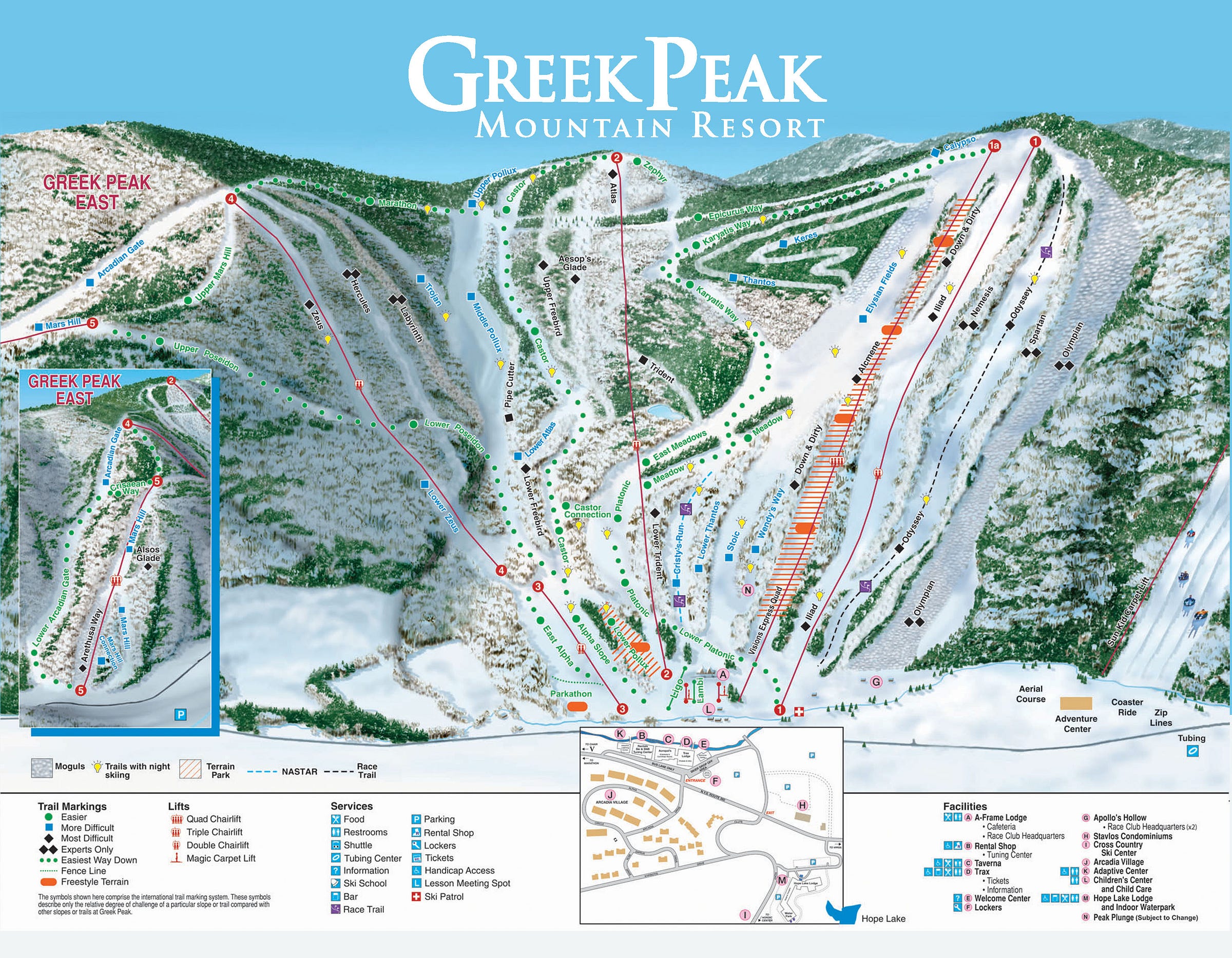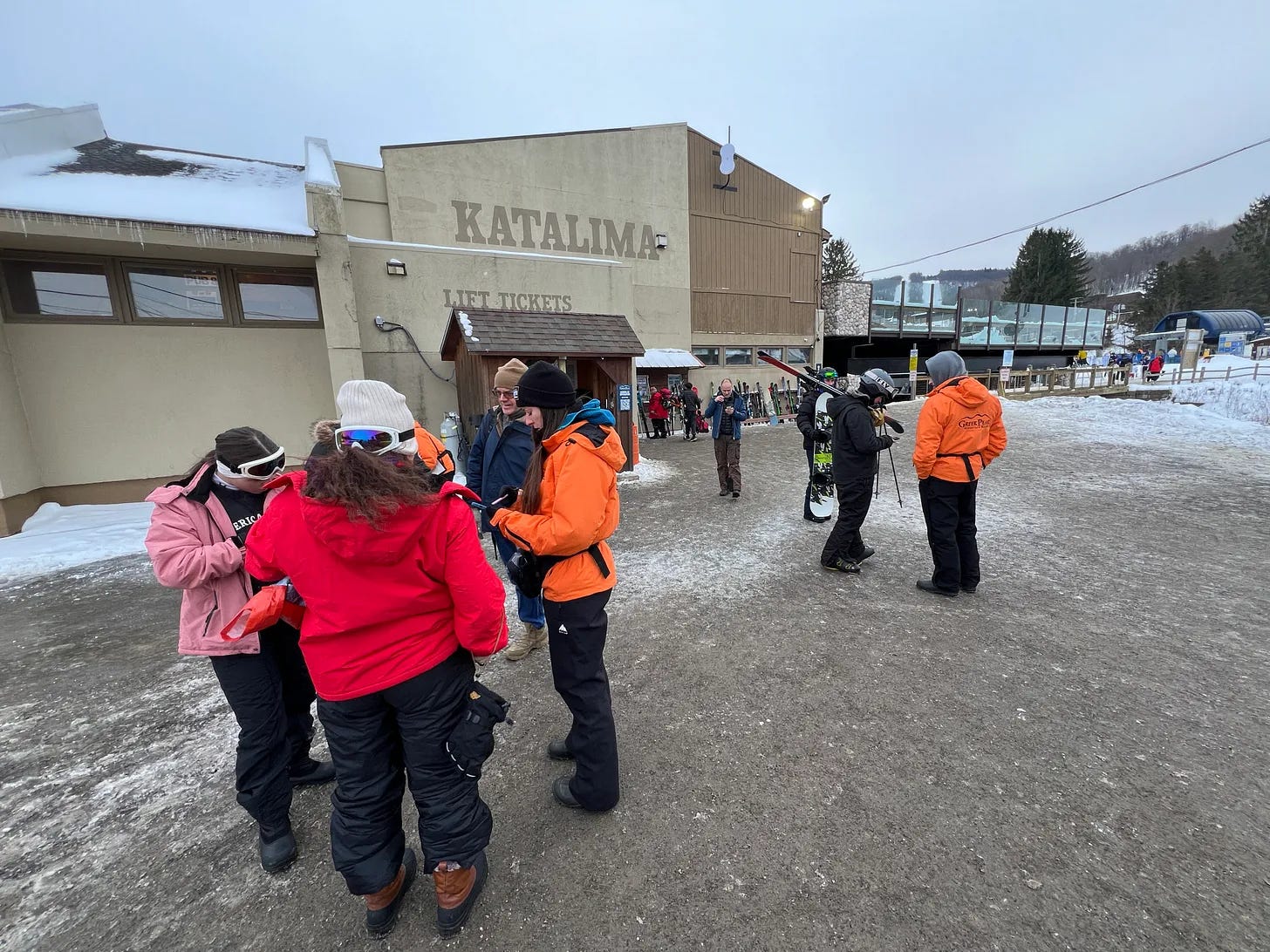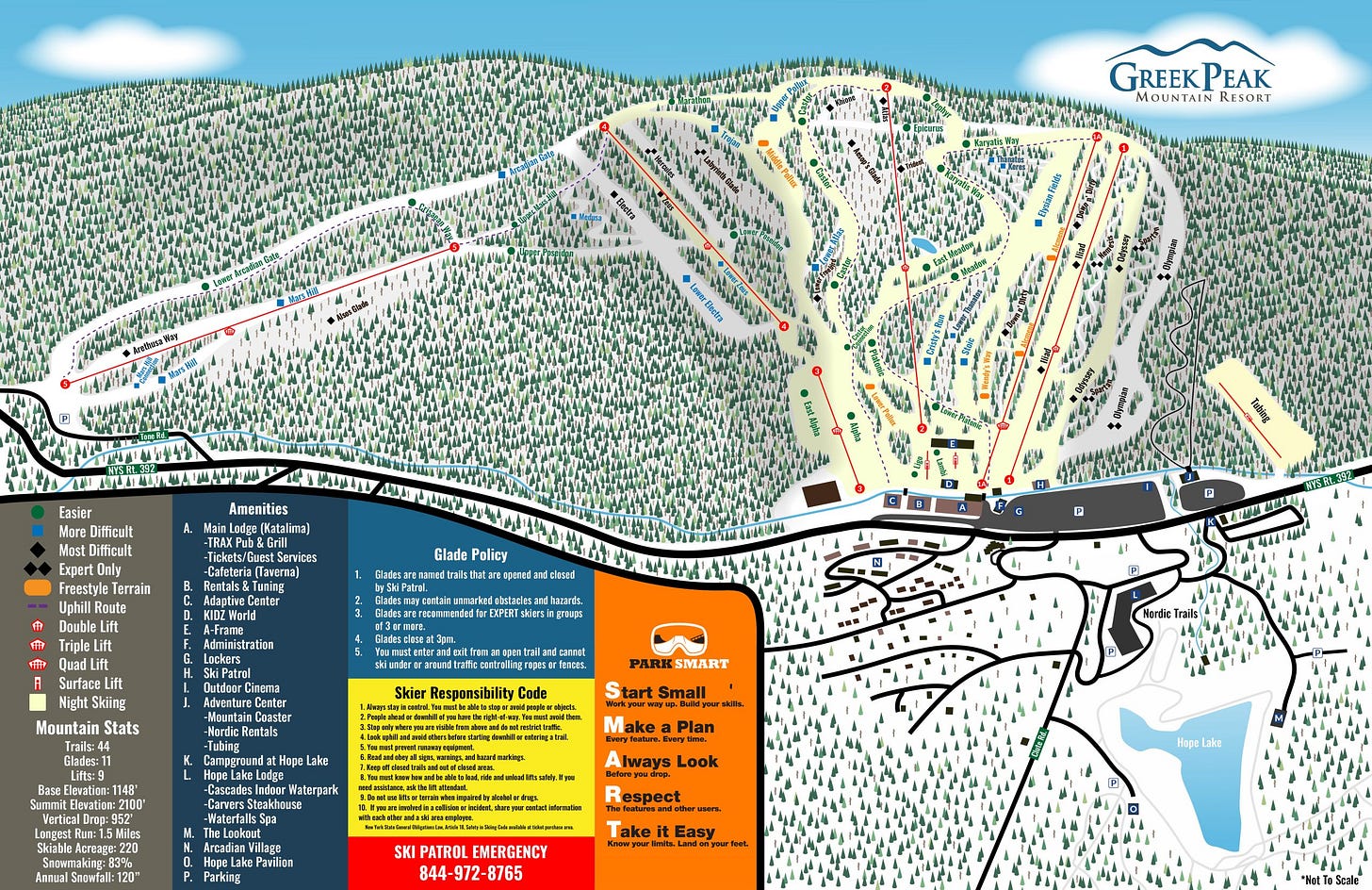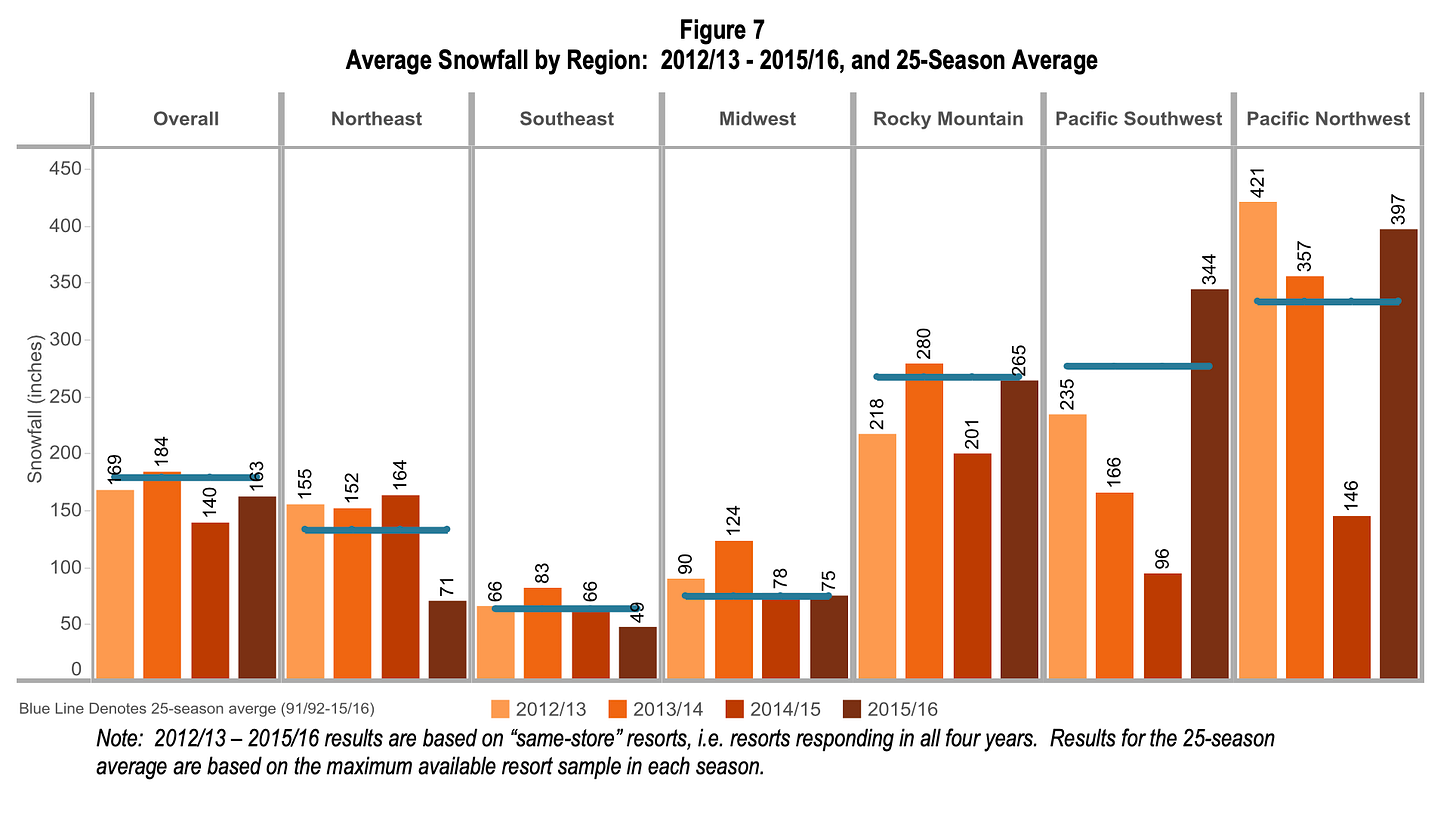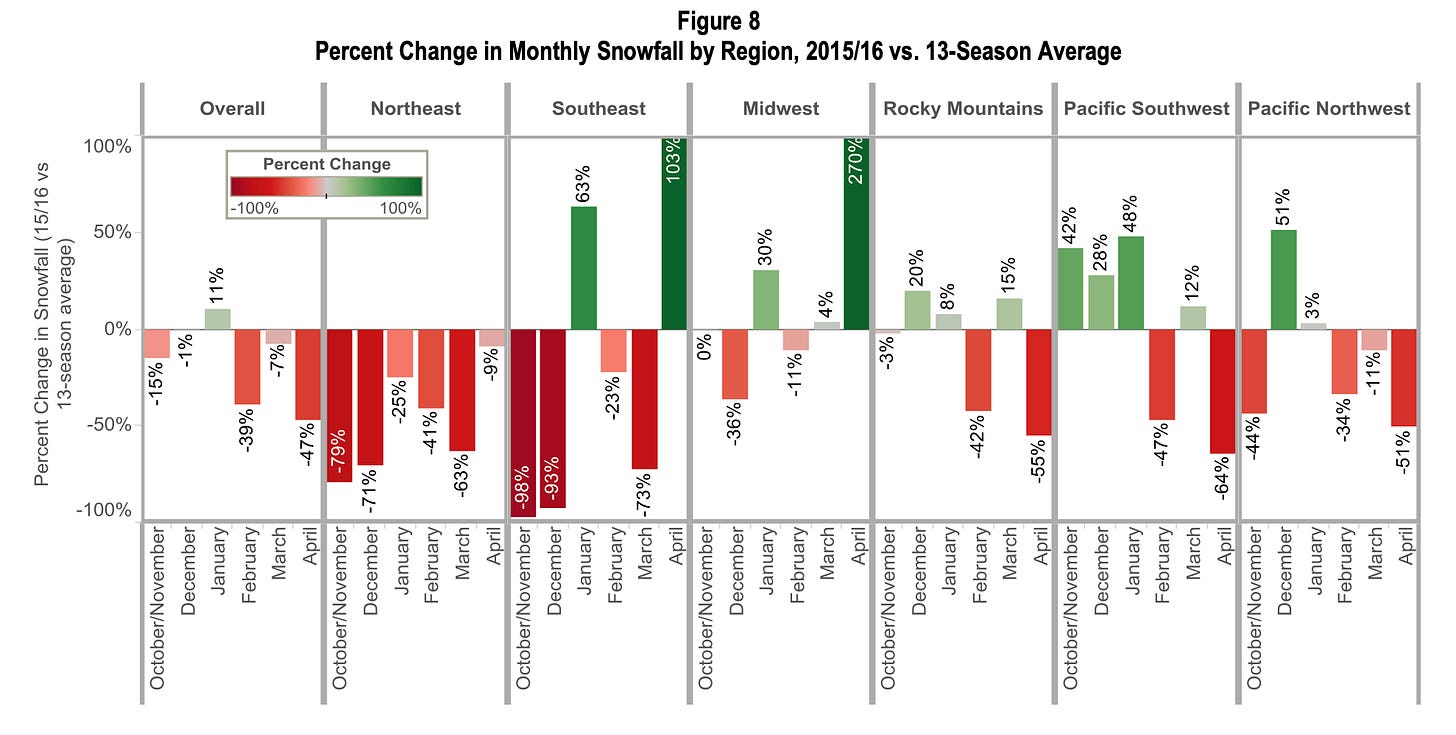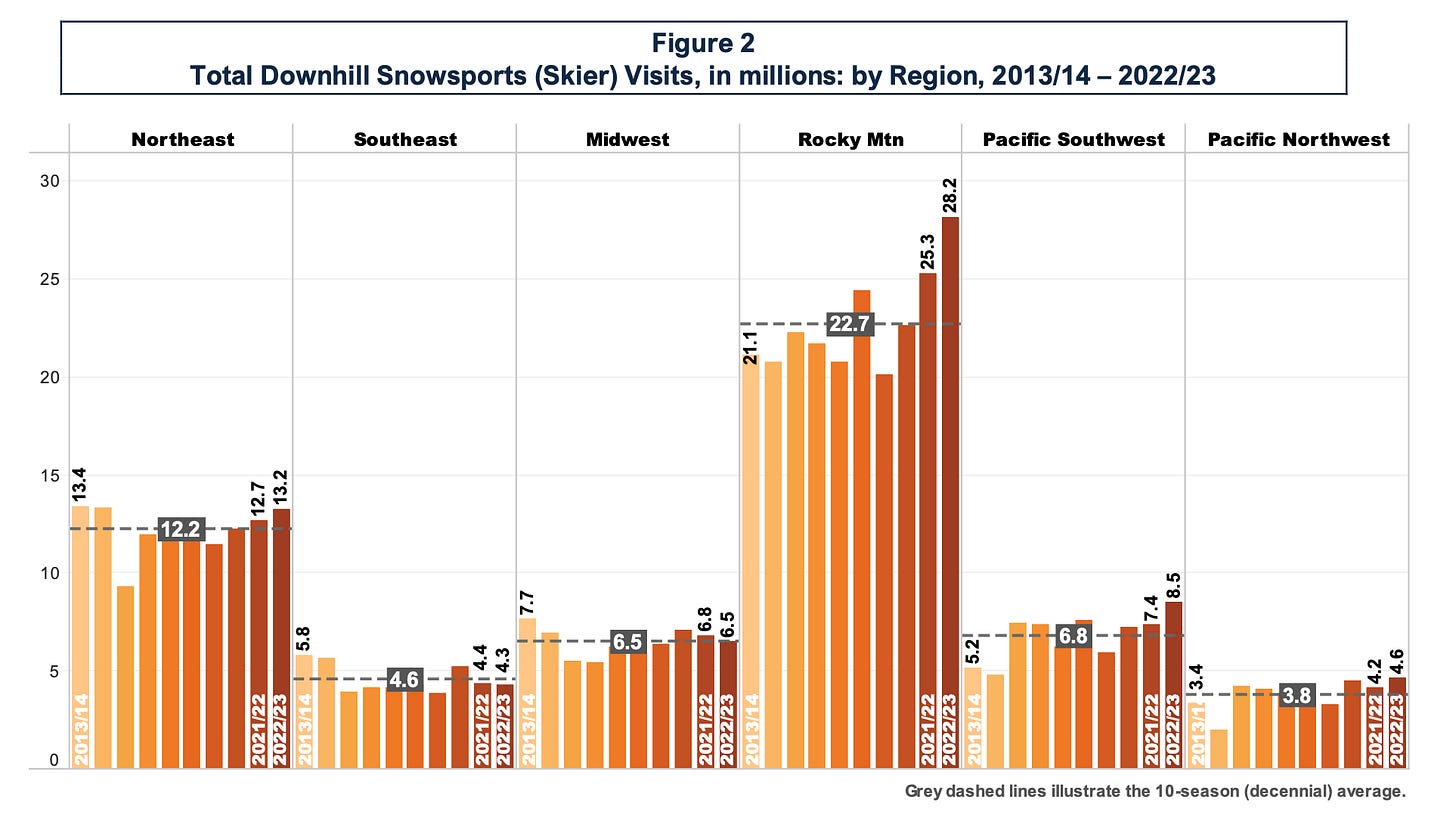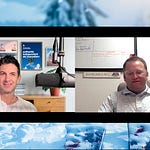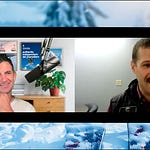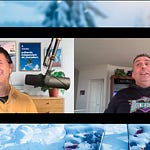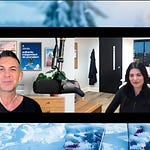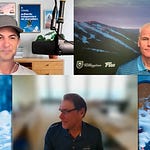Who
Wes Kryger, President and Ayden Wilber, Vice President of Mountain Operations at Greek Peak, New York
Recorded on
June 30, 2025
About Greek Peak
Click here for a mountain stats overview
Owned by: John Meier
Located in: Cortland, New York
Year founded: 1957 – opened Jan. 11, 1958
Pass affiliations: Indy Pass, Indy+ Pass – 2 days
Closest neighboring U.S. ski areas: Labrador (:30), Song (:31)
Base elevation: 1,148 feet
Summit elevation: 2,100 feet
Vertical drop: 952 feet
Skiable acres: 300
Average annual snowfall: 120 inches
Trail count: 46 (10 easier, 16 more difficult, 15 most difficult, 5 expert, 4 terrain parks)
Lift count: 8 (1 fixed-grip quad, 2 triples, 3 doubles – view Lift Blog’s inventory of Greek Peak’s lift fleet)
Why I interviewed them
No reason not to just reprint what I wrote about the bump earlier this year:
All anyone wants from a family ski trip is this: not too far, not too crowded, not too expensive, not too steep, not too small, not too Bro-y. Terrain variety and ample grooming and lots of snow, preferably from the sky. Onsite lodging and onsite food that doesn’t taste like it emerged from the ration box of a war that ended 75 years ago. A humane access road and lots of parking. Ordered liftlines and easy ticket pickup and a big lodge to meet up and hang out in. We’re not too picky you see but all that would be ideal.
My standard answer to anyone from NYC making such an inquiry has been “hahaha yeah get on a plane and go out West.” But only if you purchased lift tickets 10 to 16 months in advance of your vacation. Otherwise you could settle a family of four on Mars for less than the cost of a six-day trip to Colorado. But after MLK Weekend, I have a new answer for picky non-picky New Yorkers: just go to Greek Peak.
Though I’d skied here in the past and am well-versed on all ski centers within a six-hour drive of Manhattan, it had not been obvious to me that Greek Peak was so ideally situated for a FamSki. Perhaps because I’d been in Solo Dad tree-skiing mode on previous visits and perhaps because the old trailmap presented the ski area in a vertical fortress motif aligned with its mythological trail-naming scheme:
But here is how we experienced the place on one of the busiest weekends of the year:
1. No lines to pick up tickets. Just these folks standing around in jackets, producing an RFID card from some clandestine pouch and syncing it to the QR code on my phone.
2. Nothing resembling a serious liftline outside of the somewhat chaotic Visions “express” (a carpet-loaded fixed-grip quad). Double and triple chairs, scattered at odd spots and shooting off in all directions, effectively dispersing skiers across a broad multi-faced ridge. The highlight being this double chair originally commissioned by Socrates in 407 B.C.:
3. Best of all: endless, wide-open, uncrowded top-to-bottom true greens – the only sort of run that my entire family can ski both stress-free and together.
Those runs ambled for a thousand vertical feet. The Hope Lake Lodge, complete with waterpark and good restaurant, sits directly across the street. A shuttle runs back and forth all day long. Greek Peak, while deeper inland than many Great Lakes-adjacent ski areas, pulls steady lake-effect, meaning glades everywhere (albeit thinly covered). It snowed almost the entire weekend, sometimes heavily. Greek Peak’s updated trailmap better reflects its orientation as a snowy family funhouse (though it somewhat obscures the mountain’s ever-improving status as a destination for Glade Bro):
For MLK 2024, we had visited Camelback, seeking the same slopeside-hotel-with-waterpark-decent-food-family-skiing combo. But it kinda sucked. The rooms, tinted with an Ikea-by-the-Susquehanna energy, were half the size of those at Greek Peak and had cost three times more. Our first room could have doubled as the smoking pen at a public airport (we requested, and received, another). The hill was half-open and overrun with people who seemed to look up and be genuinely surprised to find themselves strapped to snoskis. Mandatory parking fees even with a $600-a-night room; mandatory $7-per-night, per-skier ski check (which I dodged); and perhaps the worst liftline management I’ve ever witnessed had, among many other factors, added up to “let’s look for something better next year.”
That something was Greek Peak, though the alternative only occurred to me when I attended an industry event at the resort in September and re-considered its physical plant undistracted by ski-day chaos. Really, this will never be a true alternative for most NYC skiers – at four hours from Manhattan, Greek Peak is the same distance as far larger Stratton or Mount Snow. I like both of those mountains, but I know which one I’m driving my family to when our only time to ski together is the same time that everyone else has to ski together.
What we talked about
116,000 skier visits; two GP trails getting snowmaking for the first time; top-to-bottom greens; Greek Peak’s family founding in the 1950s – “any time you told my dad [Al Kryger] he couldn’t do it, he would do it just to prove you wrong”; reminiscing on vintage Greek Peak; why Greek Peak made it when similar ski areas like Scotch Valley went bust; the importance of having “hardcore skiers” run a ski area; does the interstate matter?; the unique dynamics of working in – and continuing – a family business; the saga and long-term impact of building a full resort hotel across the street from the ski area; “a ski area is liking running a small municipality”; why the family sold the ski area more than half a century after its founding; staying on at the family business when it’s no longer a family business; John Meier arrives; why Greek Peak sold Toggenburg; long-term snowmaking ambitions; potential terrain expansion – where and how much; “having more than one good ski season in a row would be helpful” in planning a future expansion; how Greek Peak modernized its snowmaking system and cut its snowmaking hours in half while making more snow; five times more snowguns; Great Lakes lake-effect snow; Greek Peak’s growing glade network and long evolution from a no-jumps-allowed old-school operation to today’s more freewheeling environment; potential lift upgrades; why Greek Peak is unlikely to ever have a high-speed lift; keeping a circa 1960s lift made by an obscure company running; why Greek Peak replaced an old double with a used triple on Chair 3 a few years ago; deciding to renovate or replace a lift; how the Visions 1A quad changed Greek Peak and where a similar lift could make sense; why Greek Peak shortened Chair 2; and the power of Indy Pass for small, independent ski areas.
What I got wrong
On Scotch Valley ski area
I said that Scotch Valley went out of business “in the late ‘90s.” As far as I can tell, the ski area’s last year of operation was 1998. At its peak, the 750-vertical-foot ski area ran a triple chair and two doubles serving a typical quirky-fun New York trail network. I’m sorry I missed skiing this one. Interestingly, the triple chair still appears to operate as part of a summer camp. I wish they would also run a winter camp called “we’re re-opening this ski area”:
On Toggenburg
I paraphrased a quote from Greek Peak owner John Meier, from a story I wrote around the 2021 closing of Toggenburg. Here’s the quote in full:
“Skiing doesn’t have to happen in New York State,” Meier said. “It takes an entrepreneur, it takes a business investor. You gotta want to do it, and you’re not going to make a lot of money doing it. You’re going to wonder why are you doing this? It’s a very difficult business in general. It’s very capital-intensive business. There’s a lot easier ways to make a buck. This is a labor of love for me.”
And here’s the full story, which lays out the full Togg saga:
Podcast Notes
On Hope Lake Lodge and New York’s lack of slopeside lodging
I’ve complained about this endlessly, but it’s strange and counter-environmental that New York’s two largest ski areas offer no slopeside lodging. This is the same oddball logic at work in the Pacific Northwest, which stridently and reflexively opposes ski area-adjacent development in the name of preservation without acknowledging the ripple effects of moving 5,000 day skiers up to the mountain each winter morning. Unfortunately Gore and Whiteface are on Forever Wild land that would require an amendment to the state constitution to develop, and that process is beholden to idealistic downstate voters who like the notion of preservation enough to vote abstractly against development, but not enough to favor Whiteface over Sugarbush when it’s time to book a family ski trip and they need convenient lodging. Which leaves us with smaller mountains that can more readily develop slopeside buildings: Holiday Valley and Hunter are perhaps the most built-up, but West Mountain has a monster development grinding through local permitting processes:
Greek Peak built the brilliant Hope Lake Lodge, a sprawling hotel/waterpark with wood-trimmed, fireplace-appointed rooms directly across the street from the ski area. A shuttle connects the two.
On the “really, really bad” 2015 season
Wilber referred to the “really, really bad” 2015 season. Here’s the Kottke end-of-season stats comparing 2015-16 snowfall to the previous three winters, where you can see the Northeast just collapse into an abyss:
Month-by-month (also from Kottke):
Fast forward to Kottke’s 2022-23 report, and you can see just how terrible 2015-16 was in terms of skier visits compared to the seasons immediately before and after:
On Greek Peak’s old masterplan with a chair 6
I couldn’t turn up the masterplan that Kryger referred to with a Chair 6 on it, but the trailmap did tease a potential expansion from around 2006 to 2012, labelled as “Greek Peak East”:
On Great Lakes lake-effect snow
This is maybe the best representation I’ve found of the Great Lakes’ lake-effect snowbands:

On Greek Peak’s Lift 2
What a joy this thing is to ride:
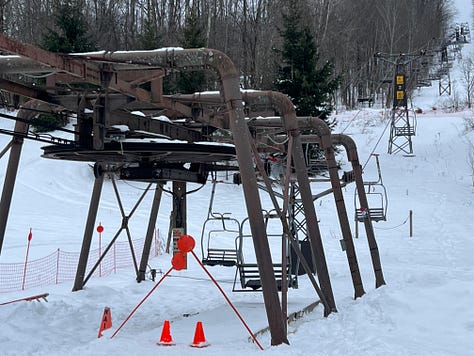
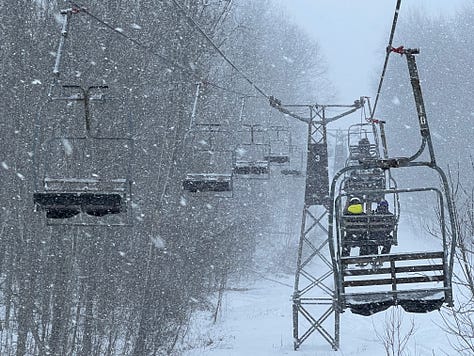
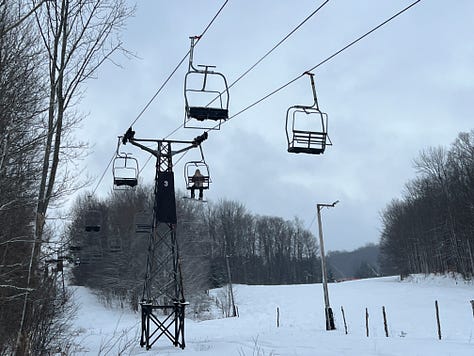
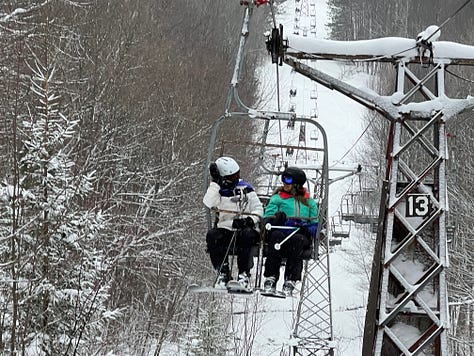
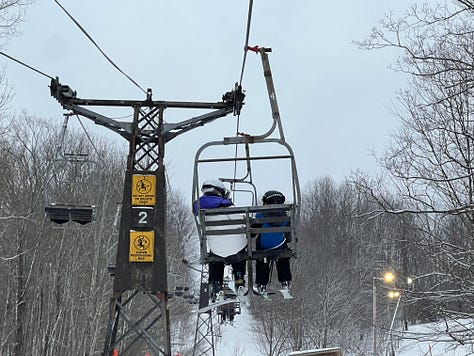
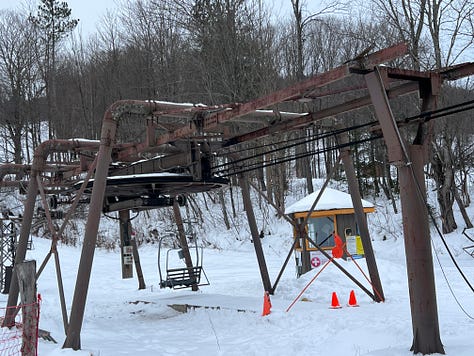


An absolute time machine:
The lift, built in 1963, looks rattletrap and bootleg, but it hums right along. It is the second-oldest operating chairlift in New York State, after Snow Ridge’s 1960 North Hall double chair, and the fourth-oldest in the Northeast (Mad River Glen’s single, dating to 1948, is King Gramps of the East Coast). It’s one of the 20-oldest operating chairlifts in America:
As Wilber says, this lift once ran all the way to the base. They shortened the lift sometime between 1995 and ’97 to scrape out a larger base-area novice zone. Greek Peak’s circa 1995 trailmap shows the lift extending to its original load position:
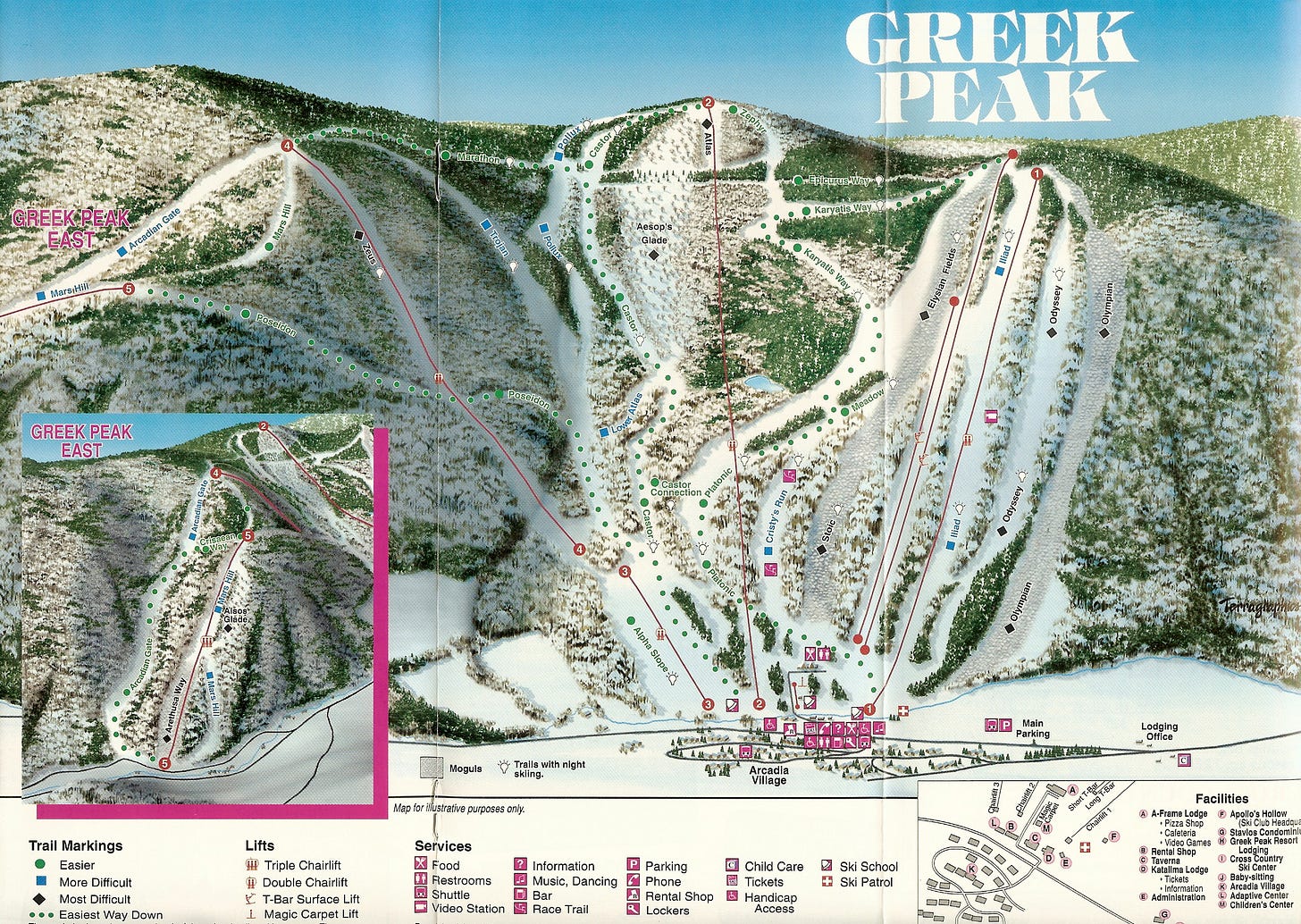
Following Pico’s demolition of the Bonanza double this offseason, Greek Peak’s Chair 2 is one of just three remaining Carlevaro-Savio lifts spinning in the United States:




